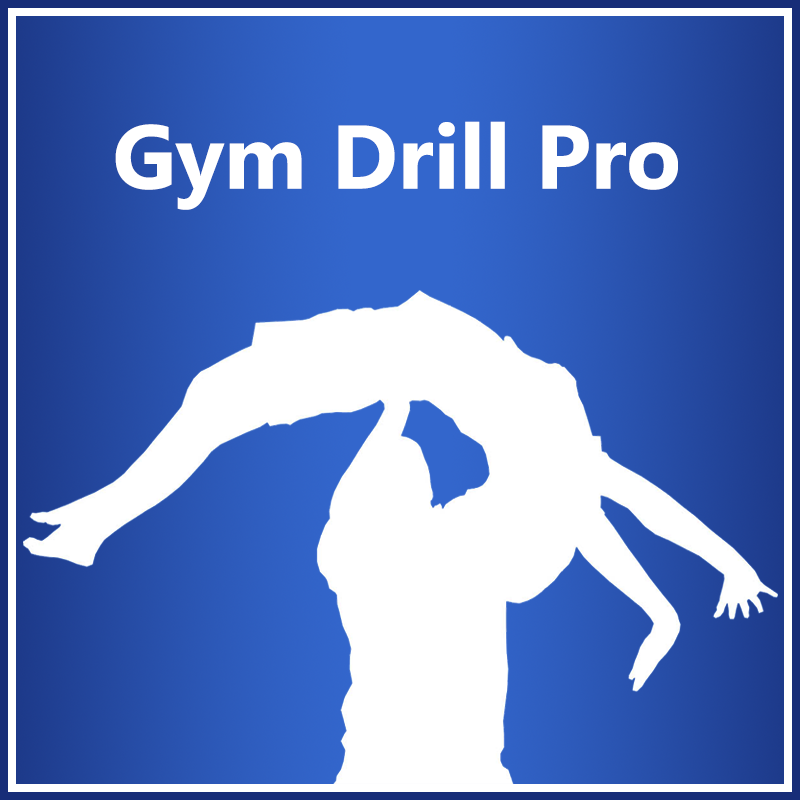

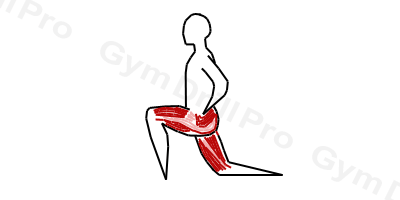
The thigh muscles are heavily involved in gymnastics. The quadriceps might be the most important muscles in bouncing the spring on vault, tumbling, and they're critical for running, landing, and decelerating as well. The hamstrings might be the most important muscles in sprint running on the runaway vault line. In weight training, the quadriceps contribute considerably to the squat exercise and the hamstrings contribute considerably to the deadlift exercise. Because the hamstrings cross both the knee and hip joints, they play critical roles in transferring power from the knee joint to the hip joint during explosive movements, such as acrobatic passes on floor exercises and beam.
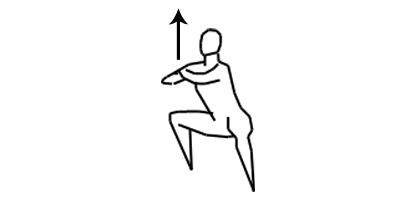
Take a very wide stance and flare thr fleet, placing the arms in the mummy position across the upper body. Most people will gravitate toward a 45-degree flare but some prefer a straigter foot angle, depending on their hip anatomy. Squat by sitting back, keeping the trunk upright and knees forced outward throughout the movement. Descent until the parallel to the ground. Rise to a standing position.
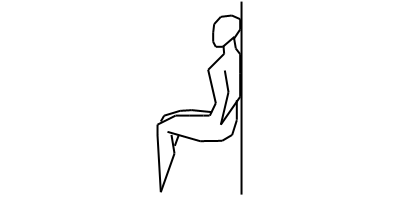
lean your back against the a wall with your feet in front of you, hands on the hips. lower the body until the hips reach 90-degree angle and the thights are parallel to the ground. The knees are at a 90-degree angle with the ships perpendicular to the groundand the feet flat on the ground. hold for the desired amount of the time. Increase the time of the holding every with every practice.
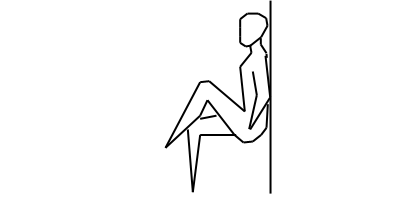
Once the wall squat becomes easy, make the skill more chalenging by raising a leg. Start with hips higher than the knees , because this is not an easy variation. Over the time you should be able to perform the movement froma 90-degree hip angle. Simply raise one leg off the ground and hold for time, then switch to the other leg. Alternate from one leg tothe other several times to fatigue the quadriceps.
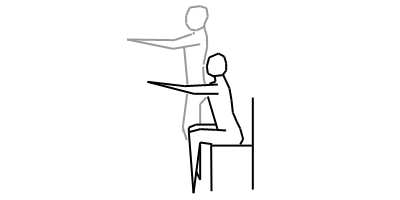
Stand with your feet wider than shoulder-width apart and the feet flared to your preference. Satnd very close to the edge of a sturdy box, bench, chair, step, or stool. initiate the movement by breaking at the hips and sitting back, keeping the chest up, the knees out so they track over the toes, and the shins perpendicular to the floor. Remember to push through the heels. Pause for a moment while sitting on the chair and then rise, making sure to squeeze the glutes to lockouts.
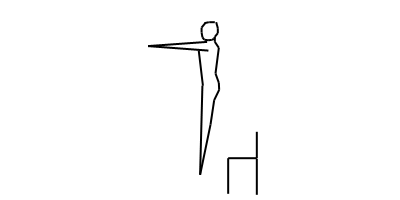
The jump chair squat is an explosive plyometric variation that involves sitting back on the chair as you would in a typical chair squat and then forcefully rising into a jump. Land soflty and absorb shock properly by distributing the loaf among all joints at play, espetially the hips.
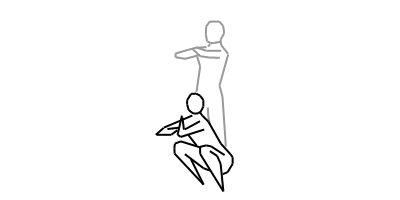
Stand with a narrow stance and feet flared. most people find a 30-degree foot flare most comftable, but this depends on individual hip anatomy. Place the hands in a mummy position, crossed in front of the body. Initiate the movement by simultaneously breaking at the knees and hips and dropping straight down. Keep the weight on the whole foot, keep the chest up, and force the knees out of the bottom of the movement so thatt knees track over the middle of the feet. Descend as deeply as posible while keeping a flat lower back .Rise to a standing position.
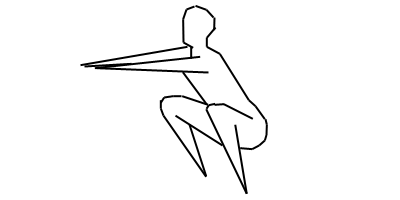
If you have dificulties with full squat, you can raise your arms as the squat descends, thereby creatinga counterbalance effect that emphasis away from the weaker knee joint and toward the stronger hi[ joint. Simply flex the shoulders and lift the arms until they are parallel to the ground as the hips flex during the descent of the squat movement.
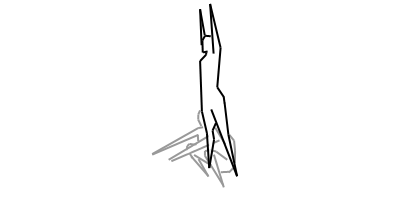
When the full squat becomes too easy, increase the challenge to the thigh musculature by raising forcefully into a jump. Remember to squat all the way down because this is not a standard vertical jump. Squat, keep the chest up and knees out, jump as high as possible, and then use the hips to absorb the landing.
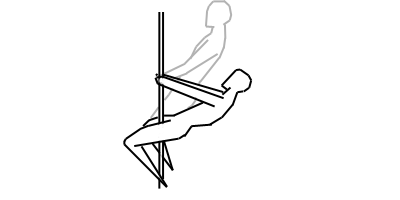
Begin in a standing position with a narrow stance. Gasp something in front of you for a balance. Descend by breaking at the knees and shifting them forward while leaning the torso ba kand rising onto the toes. Descend until the desired depth is reaching and then rise to return starting position.
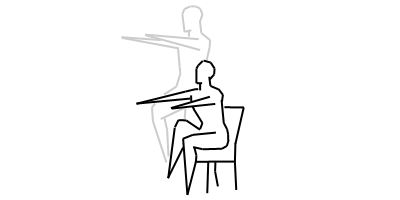
Stand in front of a sturdy box, bench, chair, step, or stool, with the hands in front of the body. Standing on one leg, sit back and down onto the surface, keeping the chest up and the spine rigid. The knee tracks over the midfoot as you push through the heel. Lift the arms for counterbalance. Pause on the chair for a moment, then rise to return to starting position, making sure to squeeze the glutes.
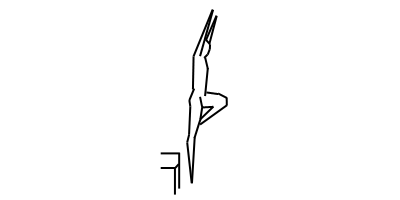
The jumping single leg chair squat is an advanced movement that requires considerable hip stability, balance, and strength. Simply add a jump to the movement by accelerating the body upward during the concentric phase with enough power to leave the ground and make sure that the jump appears fluid and natural. If it’s not, you are not yet ready for this modification. Single leg movement improvements in balance that are critical, especially as you age.
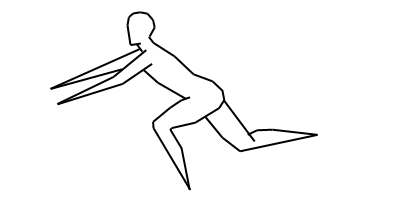
Stand on the foot and place your hands in front of the body. Sit back and down, breaking at the hips and knees while leaning forward at the trunk. Descend until the knee of the nonworking leg approaches or touches the ground. Stand up to return to the starting position. Perform all the repetitions with the weaker leg first and then switch and repeat with the stronger leg.
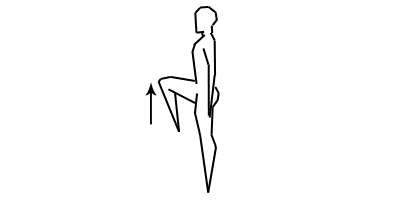
Adding a knee raise further challenges your single-leg stability because you will be standing on one leg the entire time, taking the nonworking leg from a position of hip extension to hip flexion. Squeeze the glute of the working leg and stand tall when the hip of the free leg is at its highest point of flexion.
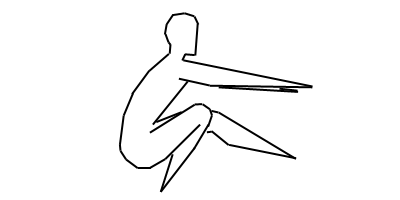
Stand on one leg. Sink down by breaking at the hips and knees simultaneously. Raise the arms, flex the hip of the nonworking leg, keep the chest up, and push through the heel. Descend until the desired depth is reached and then return to the standing position.
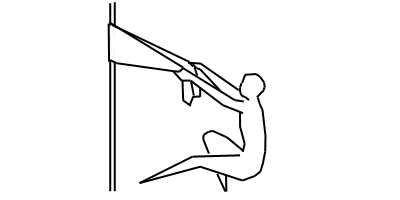
Most people are not nearly strong and coordinated enough to be able to perform pistol squat. The pistol squat is a highly challenging lower-body movement, and most of us need assistance to be able to perform the movement properly. It is possible to wedge a towel in a door or around a pole to provide the assistance necessary to perform the lift.
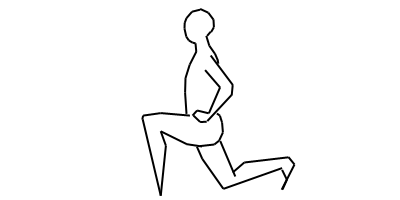
Get in a split stance position that is wide enough that your shin is vertical at the bottom of the lunge. Your hands are on the hips and feet pointed straight ahead, keeping the torso upright, descend until the back knee approaches or touches the ground. Return starting position.
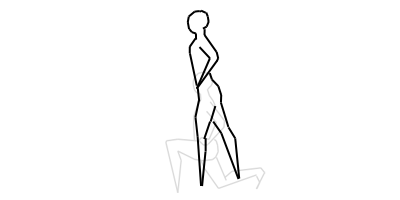
Once you master the forward lunge, try to perform a plyometric lunge by jumping into the air and alternating legs with each repetition. When performing the alternating jump lunge, spring straight up into the air high as possible and absorb the landing sinking into a lunge position. Repeat.
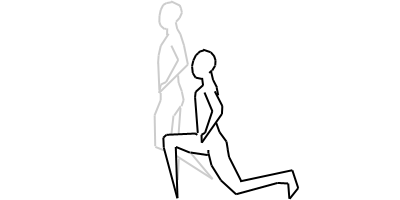
Stand with feet pointed straight ahead and hands on the hips. Keeping most of the weight on the front leg, step back and lean forward to an approximately 30-degree trunk angle, sinking into the working hip and descending until the back knee approaches or touches the ground. Rise back to starting position.
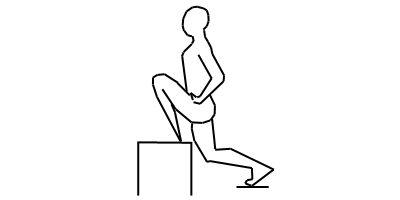
Once you master the reverse lunge, you can increase the exercise’s difficulty by standing on a step, box, or short table that is approximately 6 to 10 inches high. The same rules apply, but this variation will increase your hip range of motion and provide a greater stretch to the working glute. Beware the following day. This exercise may impair your ability to sit down without appearing like an old man or woman. In other words, the stretch loading on the hips can produce serious glute soreness.
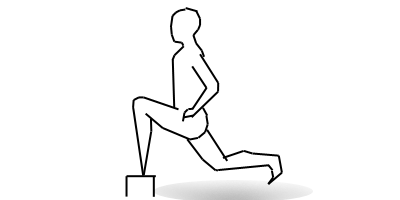
Once you have mastered the step-up and deficit reverse lunge, you can perform a combination lift that is highly effective. Stand on the of the step, making sure your entire foot is on the step so you can push through the heel. Step back and upon landing sink int lunge position, feeling a biog stretch in the glute. Keeping the chest up and a slightly forward lean, spring up. Try to keep most of the emphasis on the front and avoid using the back leg for too much assistance.
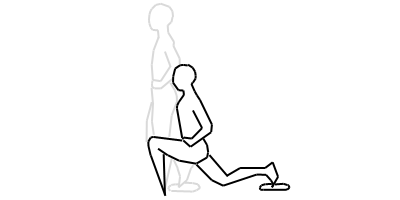
Stand with feet pointed straight ahead about shoulder-width apart with hands on the hips and one foot on a paper plate. You also may use a commercially-available sliding exercise disc or, on a slick floor, a small hand towel. Keeping most of the weight on the foot that is not on the plate, slide the foot on the plate back and lean forward to an approximately 30-degree trunk angle, sinking into working hip and descending until the back knee approaches r touches the ground. Rise to start position.
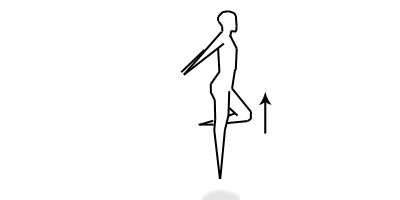
The jump skater squat is an advanced movement that requires considerable hip stability, balance, and strenght. just add a jump to the movement by accelerating the body upward fluidly with enough power to leave the ground. if the jump doesn't appear fluid and natural, you are not ready for this variation.
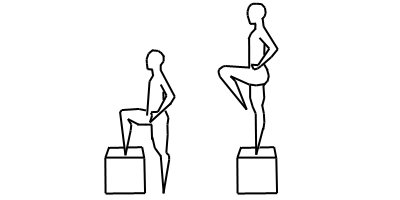
Begin with your entire foot placed on the top of the step, sturdy box, chair, or wigh bench. The other foot remains on the ground. Shift your weight forward and lift your body weight by stepping up, making sure that the top leg does most of the work and the bottom leg doesn’t provide too much momentum. Stand tall and squeeze the working glute. Do not touch the working leg to the bench and swing the non grounded knee upward by flexing the hip. Lower yourself slowly and under control back to starting position.
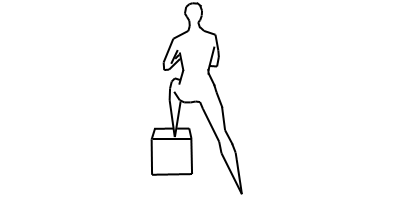
Perform a plyometric style of step-up by adding an explosive step-up and then jumping from one side of the step to the other in alternating fashion. Aim to achieve maximum height on the jump and make sure your posture stays solid throughout the set.
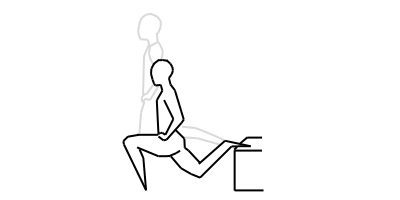
Stand in front of a step, stair, couch, bed, table, stool, or weight bench. Reach back with on foot, resting the top of the foot on the top of the surface. With an upright trunk or a slight forward lean, sink the knee of the rear leg down and slightly back while trying to keep most of the body weight on the front leg. Descend until the back knee almost touches or touches the ground. Rise to starting position.
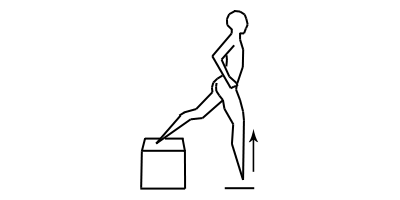
Once you are proficient in the bulgarian squat, it's time to add a plyometric effect to the movement by jumping into the air. Sink all the way down, produce maximum concentric propulsion and jump as high as possible, and then absorb the landing softly.
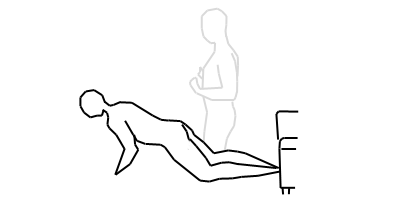
Find a rail, beam, or stable couch to wedge your feet under. Kneel on top of a pillow or folded towel to reduce pressure on the knees. With an upright trunk, lower the body under control while keeping the glutes tight , making sure not to bend forward too much at the hips or allow the pelvis to anteriorly rotate too much. At the bottom of the movement, catch yourself in a push-up position and spring back to starting position, using the shoulder and arm muscles for assistance but attempting to maximize the torque on the knee joint and trying to rely on the hamstrings for movement production.
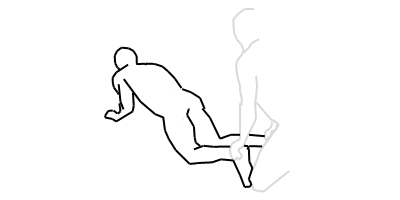
It helps tremendously to have a spotter for this skill. Have a partner hold the back of your ankles, bracing their body over your ankles and pushing down to hold you in position. As your body descends, your partner will need to brace very hard to provide the required support to ensure your body so all of your energy goes into the exercise and is not wasted trying to stabilize yourself. Lower the body slowly and push your body back to starting position while trying to use the hamstrings as much as possible. Make sure you squeeze the glutes throughout the movement to ensure that the pelvis does not tilt forward.
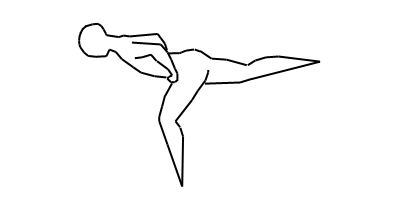
Stand on one foot. Squeeze the glute of the non grounded leg to lock it into position as it travels back. Making sure the rear leg stays in line with the torso, bend over at the waist while shifting the weight back and looking down to prevent cervical hyperextension. Keep the chest up. Keeping a strong low-back arch, descend until your hamstring range of motion runs out. Reverse the motion back to starting position. Perform all the repetitions on the weaker leg first and then switch and repeat with the strongest leg.
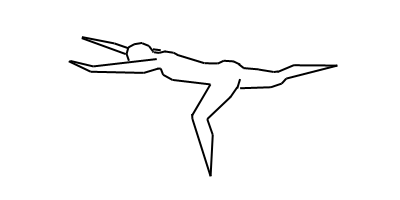
When you mastered the single leg Romanian deadlift incorporate a reaching technique by flexing the shoulders to raise the arms so they're in a straight line with the rest of the body. The rear leg, torseo, and the arms should be roughly paralled to the ground. In addition, perform a knee lift at the top of the movement while balancing on one leg. The exercise is challenging in terms of hip and thoracic spine flexibility as well as proprioceptive control.
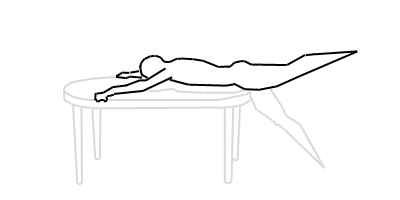
Lie with your torso acros a sturdy table, draping your legs over the edge and grasping the edges of the table, knees straight. Keeping the torso locked into place, raise the legs, making sure to squeeze the glutes up top and prevent overextension of the low back. Lower the legs to a straight starting position, keeping the spine stable and making sure to prevent rounding the low back.
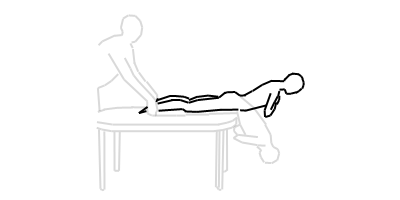
With a spotter holding the back of your ankles, drape your body over the end of a coach or sturdy table so that your legs are straight and secured. Make sure the neck is in neutral position and the hands are in the mummy position (crossed in front of the body). Bend at the hips abd not the spine, getting a good stretch in the hamstrings. Raise the torso while squeezing the glutes to lockout.
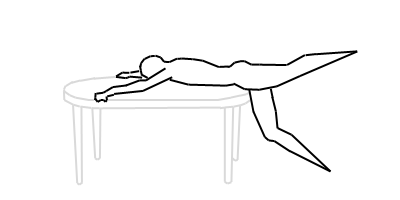
For people who struggle with the double-leg reverse kick back, the single leg kick back is easier because it requires less from the spinal erectors. Focus on keeping proper body position and moving solely at the hips and not the spine. Soon you will be able to perform double-leg rebers kick back, but be sure you master the single-leg version first.
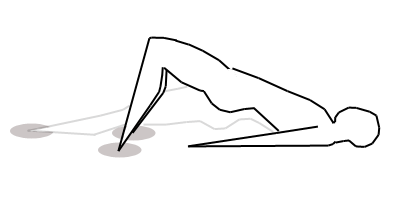
Lie on your back with palms down, placing your heels on two paper plates. You also may use commercially-available sliding exercise discs or, on a slick floor, two small hand towels. Bridge upward in the hips while simultaneously bringing the heels toward the buttocks. Keep the hips high throughout the movement. Lower the body back to starting position.
Integral part of gymnastics coaching process are skill drills. They help gymnasts to learn easier and technically correct. With GYM DRILL PRO you will find variety of ideas for the most the basic gymnastics skills. There are plenty of images with skill drill progressions. It is intended to support explicitly the qualified coaches in their daily coaching business. DO NOT practice without the guidance of proper professionals.